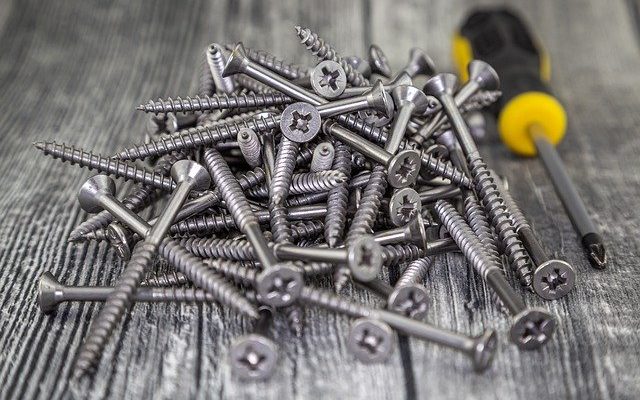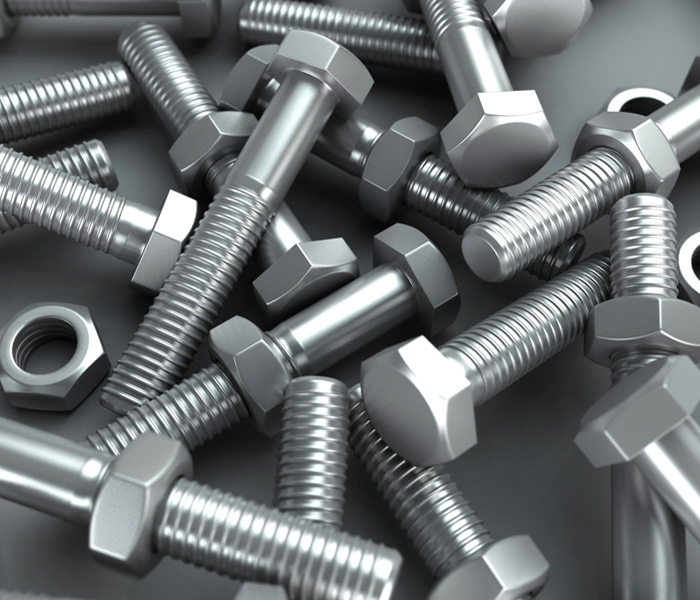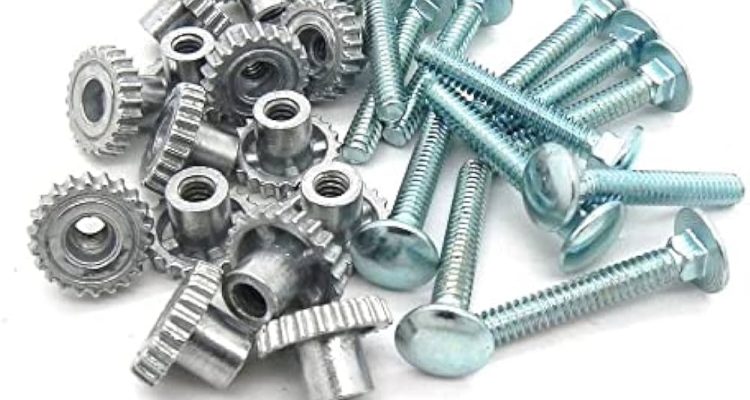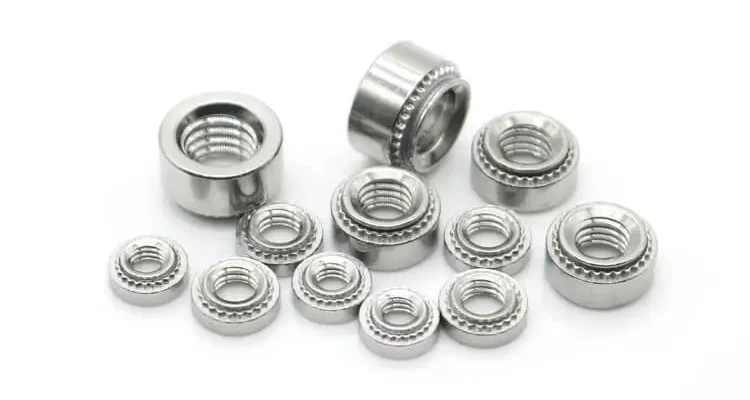
Avoid 6 Common Screw Mistakes
Using the wrong type, length, or material of screws, over-tightening, using mismatched bits, and not pre-drilling holes are common screw mistakes
Using The Wrong Type Of Screw
It is a big mistake if you use wood screws in metal. Wood Screws : Wood screws feature wider, coarser threads that are designed to grab onto wood fibers. However, when applied to metal, these screws lack the bite to hold strong enough and the project doesn’t hold together and is susceptible to falling all to pieces.
Metal Bracket Failure for Homeowner
An example of a metal bracket with wood screws being attached to a steel beam by a homeowner. The result was in an entirely wobbly-unstable structure, a failure of the screws to get any significant purchase on the metal. The correct way would be to have used self-tapping or self-drilling metal screws that automatically create their own threading into the metal, thus holding strong.
Construction Site Incident
Workers at a construction site attached wooden planks to a patio structure with drywall screws instead of deck screws. These twines rings are not meant to bear outdoor environments and strong influences; the reason they are quickly worn out. Not long after, dozens of screws began to rust and snap – several pieces of the patio ultimately gave way over the course of months. Because these are galvanized and made to be structural, it would not have happened if they had just used deck screws.
Furniture Assembly at Home
Machine screws (workbench, etc.): Someone used machine screws instead of wood screws in a DIY furniture project (wood bookshelf). When a screw is machined, this means that the screw is designed to be threated into metal or plastic (holding threads) and not threaded into wood. The screws could not keep the wooden pieces in place and the bookshelf leant to one side before collapsing on itself. Strength and stability could have come from use of wood screws of the correct length and gauge.
Electric Outlet Installations
While mounting the outlets, an electrician fastened them with regular screws instead of electrical box screws. The different thread design of standard screws allows them work themselves loose as the cabinet is opened and closed, or as the camper is being used. IT MAY RESULT IN LOOSE ELECTRICAL CONNECTIONS AND A FIRE. The screws that hold an electrical box in place are designed for the specific purpose of keeping it tightly connected to the wall.
Failed Roofing Project
I’m at a roofing job, and the contractor is using wood screws to fasten down metal sheets. If you use wood screws they will not make an airtight seal which will allow moisture through the rubber and cause leaks of water. The wrong screws led to water penetration over time which ended up causing water damage to the structure under the roof. Metal screws will be used with rubber washers to assure a water tight seal.
Repaired automotive repair
A mechanic uses wood screws for an automotive repair to attach metal bracket by tap self. The screws weren’t strong enough to survive in the high-stress environment under the hood, and soon broke… causing even more mechanical problems. The proper repair should have been made with automotive-grade bolts and screws to assure failure under the high temperatures and vibrations would not occur again.

BICT-QATAR
Incorrect Screw Length
Choose the wrong size: Wrong-sized screws can result in longer-term structural integrity in a wide range of projects. An improperly sized screw can compromise the stability and strength of the assembly, with a screw either long or short of the necessary size impacting the final build.
not brought up tightly and nailed
A home owner was in the process of replacing his kitchen cabinets, using 1-inch screws to attach the new cabinets to the wall studs. Conventional wisdom tells us to use 2.5-inch screws in configurations like this so that the screws can bite solidly into the studs. Within a few weeks, the short screws could not hold the weight of the heavy cabinets and they began to pull away from the wall.
Deck Construction Collapse
During a deck construction project a contractor used 2-inch screws to attach 1.5-inch thick decking boards to the joists. Types: For optimal deck construction, it is advised to go for screws that are twice as thick as the decking material. Loose Boards: The short screws never bit into the joists about enough, causing several boards to work loose very quickly and sections of the deck to simply break underfoot.
Furniture Assembly Disaster
A self-proclaimed do-it-yourselfer that used 1-inch screws to put together a 3/4-inch thick particle board bookshelf The screws were barely long enough to pinch the boards together so they could be used almost immediately, but they didn’t provide any additional support for the weight of the books. Its hiring the best screws;-) You want screws that are at least 1.5 the length of the material you are attaching. The bookshelf was broken after a few months of use, where the books and the surrounding area were all ruined.
Roofing Panel Detachment
Roofing screws just 1 inch long were used to hold down the metal panels in one roofing project. These screws were insufficiently anchored in the wooden rafters to hold back the metal panels from wind uplift forces, If it implies screws, screws in the roofing Whenever possible should penetrate rafter or truss top chords by at least 1-1/2″ to provide a secure attachment. But the panels began falling off in a major wind and rain storm, resulting in much water damage to the interior of the building.
Drywall Mounting Issues
The contractor drove 1.25″ screws to the ceiling joists to attach 1/2″ drywall. For drywall on the ceiling, screws needs to be at least 1.5 inches long or they will not bite into the joists properly. Long screwsLong screws were a must in a few areas, like this, as the short screws caused the drywall to sag and eventually fall, creating a hazard.
Garage Shelf Collapse
To anchor the brackets into 2×4 studs he used screws that were only 1 inch long; the results were much less than sturdy so he mounted the shelf without loading it and called in the professionals. Before long, the force of the tools and equipment on the shelf was too much for the inadequate short screws and it simply ripped out from the wall. Use screws that are at least 2 inches long to secure heavy-duty shelving to wall studs so they can support the weight safely.
Over-Tightening the Screw
Screw too tight for everything, including the screw. It will strip out the head of your screw, create a weaker area in the material, and possibly cause splits or cracks.
Stripped Screw Heads on Electronics
Technician overtorqued screws holding laptop’s motherboard at electronics repair shop. With too much torque, it stripped out the Phillips-head screws to the point they could no longer be removed with standard-issue tools. PS- The tech that followed through on this job even broke off that fitting installing it incorrectly which held up the repair process and ultimately cost the customer more money as he had to drill out and replace the screws that were damaged.
Furniture Assembly Wood Splitting
The wood that the chain was composed of split along the grain, when a DIYer over-tightened the screws during assembly of a wooden chair. The wooden pine chair, in particular, was prone to breaking with too much pressure. The split was on the sides of the chair which compromised the structural sturance, hence not safe to be used. In this case, proper adjustment of the torque settings on the power drill could have avoided that issue.
Use of Plastic Cracked Components in Auto Repairs
An auto mechanic struggled when tightening screws on a plastic engine cover. This design caused the pressure from the shaft to crack the plastic components, being so brittle in order to be light weight. This meant the cover had to be completely replaced, raising the cost of the repair and extending the duration. This issue would be never occurred if proper torque using a torque wrench would be used here.
Damaged Drywall Anchors
A homeowner over-tightened screws in a drywall anchors on a heavy mirror hanging in a home improvement project. The mirror fell and shattered because the anchors lost their hold on the drywall, which the screw wore out by over-tightening. Because drywall anchors are made to expand and grip on the inside of the walls and when you over-tighten them you prevent them from functioning properly.
Compromised Metal Structures
The bolts that connected metal beams were over-tightened at a construction site. The removal required so much excessive force that the threads on the bolts stripped and the connections became less secure. This has since compromised the whole of the structure as this would eventually be a health and safety hazard. The bolts had to be inspected and replaced at the cost of time and laborModelCreating delays and additional labor. In such instances, keeping the structure integral, needs right torque specification.
Plumbing Gaskets Crushed
Your kitchen gets flooded or you have a mild leak under the sink – plumber tightened the screws on a gasket seal a bit too much and it started to leak after a month. The unduly high pressure squashed the gasket out of shape so that it no longer sealed water tight. This caused even more water to escape and damage the area around the faulty pipe. Gaskets are meant to compress only so you can actually cause them to fail if you goth those bolts to tight.
Using The Wrong Screwdriver Bit
Damaging screw heads and ineffective fastening due to wrong screwdriver bit. Ensuring the bit type matches the screw head is essential for maintaining proper engagement and a secure fastening connection.
Broken screws in The Art of Computer Repairs
A technician in a computer repair shop used a flat head screw driver bit for a Phillips screw while disassembling a laptop. This one mismatched bit repeatedly backed out of too-soft steel screw heads and stripped them to uselessness when I tried to remove them-with this bit-and risk doing even more harm. This forced the technician to extract the screws with a special tool, which only added time and cost to the repair.
Appliance Installation in Stripped Screws
The installer decided after the fact to use Torx screws with a Phillips screwdriver bit during a dishwasher install. While Torx screws are meant to be resistant to slippage, the use of a Phillips bit caused the screw heads to strip. This set us back both time wise in the install as well as requiring us to buy new screws for everything. If I had used the proper Torx bit, the process would have gone much easier.
Improper Carriage In DIY Furniture Installment
Someone putting together an Ikea bookcase with square screw (Robertson, for all you Canadians out there) screwdriver bits commits the same error as a drummer.puting a Phillips head screwdriver into a Sqaure scew onPostExecute These were not quite long enough for the screw heads, and would slip a little causing you not being able to tighten the screws down. This left me with a bookshelf that would wobble and sway. A Phillips bit would have given the necessary torque and would have securely fastened the screw.
Construction Site Delays
Workmen at a building site use Pozidriv as opposed to Phillips screwdriver bits on drywall screws. While Pozidriv and Phillips bits appear similar, they should not be considered interchangeable. They were cam out, partially driven screws with the wrong bit and weakened connections. Workers had to remove and replace dozens of screws, setting back the project timeline and adding labor expenses.
Automotive Repair Issues
A mechanic used a Phillips bit on an Allen or hex bit on some screws that needed to be undone during an automotive repair. The stripping of the screw heads was attributed to incorrect bit application, so that screws were stiff to remove (or tighten) in confined engine spaces, and “using your fingers” was not a viable option. This oversight not only caused a delay in extracting the damaged screws and replacing them, it made what should have been a simple and easy repair, that much more complicated.
Cabinet Installation Problems
While not plumbing-related, a kitchen cabinet installer recently installed a pair of cabinets in my kitchen using screws that had been designed for a square drive using a Torx bit. The off-sized bit that tore my head to shreds led to stripping FOUR screw heads off the screws so they would not go all the way in to the cabinet frames. This error resulted in the cabinets not being bolted on properly and they had to reinstalled with the correct bit. These problems could have been avoided had the correct bit type been used from the outset.
Not Pre-Drilling
Failing to pre-drill holes before inserting screws: Splitting the material, weakening your structure, and difficulty driving screws. This step is essential to give a fairytale finish, without any doubts while working in some hard material and also when the project requires delicacy.
DIY Projects That Require Splitting Wood
One of the DIY enthusiasts tried building a pine board wooden planter box. Not pre-drilling pilot holes before driving in the screws, caused the screws to force the wood to split along the grain – hence greatly compromising the joints. Visible splits started appearing every time a screw was driven in without first drilling a hole, compromising the strength of the planter overall. In this case, also whenever working in softwoods like pine, it is recommended to predrill the holes for the screws, both to avoid splitting, as to ensure a stronger bond.
Cracked Hardwood Flooring
The installer of hardwood floors did not pre-drill holes for nails during installation. The oak hardwood planks were starting to split around the nails – the pressure required to both push, and pull the nail is great! I opened up the ceiling and saw the visible damage and had to replace several planks. If the customer had pre-drilled holes slightly smaller than the nail and driven the nail through it, we could have protected the integrity of the wood without causing the old brittle wood to crack.
Bolt Lock Washers in Metal Projects
A steel bracket with holes not pre-drilled in a metal frame was fitted by a metalworker. Due to the hard metal and the fact that the screws were self-tapping screws, they inevitably loosened over time as they could not be screwed into the rigid and dense steel material. By pre-drilling holes, the self-tapping screws are able to bite into the material in the optimal position of the hole, thus creating a stronger, longer-lasting thread in the material that does not fully back itself out.
All those Crappy Plastics in Model Building
A plastic model airplane being built by a hobbyist was manufactured without the tiny holes pre-drilled for the screws. This caused the screws to split the plastic and the model was less stable and less beautiful. By pre-drilling small holes in plastic components, you make screws mount with ease without making them crack.
Insecure Deck Railings
A contractor who was building a deck attached railings to the posts without pre-drilling (Photos: via DoItYourself.com). As you can see in the previous pic, the screws split the wood posts, which meant the railings didn’t feel too sturdy I could rip them off anytime. The condition of the deck of the house had deteriorated and was a safety hazard. If holes that match the size of the screw had been drilled prior to the installation, then the wood would not have split and the railing would have have been successfully attached.
Compromised Furniture Joinery
A carpenter who was putting together a differential wooden table top without pre-drilling jobs on the screws that were meant to hold the table top to the legs The hardwood legs snapped at the screws and when this happened, the joints weakened, and hence the doom began to greet the table. However the circular saw was too powerful and started separating the joints (a special thank you to the excellent carpenter from my local area who kindly rebuilt them for me, free of charge, merci French Disabled Person Tax!!!). Pre-drilling creates a clean hole for the screws to go through, preventing the joinery from splitting and thus weakening the strength and integrity of the joint.

Cold Forge Fasteners And Forging
Choosing the Wrong Screw Material
Choosing the wrong screw material can cause extensive problems such as corrosion, structural failure, and increased maintenance expenses. The right material is critical for longevity and safety of your projects.
Rusty Screws in Patio Furniture
A homeowner pieced together an outdoor wooden patio set using typical steel screws. This was within six months, and the screws, due to its exposure to rain and humidity, the screws rusted with the joints loosing and which made the furniture unstable as well. If you want to use it in outdoor conditions, the best screws for pressure treated lumber are stainless steel or galvanized screws because they can withstand rust and corrosion, keeping the wooden bits strong as if it were newly installed.
Boat repair on rusting screws
How about a zinc-plated screws to sailboat hull repair. Within months these screws started to corrode and due to the marine environment they were implanted in, the strength and safety of the boat was compromised. Silicon bronze and stainless steel screws are best for marine environments because they resist corrosion better than steel screws when exposed to saltwater.
Weakened Metal Structures
Aluminum screws were also used fasteners in a new steelwork build by a construction team But when the screws, made of aluminum so they were softer than steel, started to fail under the weight of the structure. The mismatch in the strength of materials is exactly what we talked about, a compromised and unsafe framework. We could have a strong durable and safe assembly if the assembly was held together with high-tensile steel screws or bolts just as strong as the steel framework.
Failed Roofing Installation
Contractors had used ordinary steel screws when installing metal roofing sheets in a roofing project. Over time because of the weather, this metal roof screws began to rust which caused the roofing sheets to come loose and let water in and delaminate the roof sheets. It is necessary to use the rights sized roofing screws with the rubber washers and corrosion resistant coatings for a long-lasting, snug roof installation.
Deteriorating Deck Screws
A Builder Used Only Untreated Steel Screws To Build A Deck With Pressure-Treated Lumber. The pressure-treated wood contains chemicals that are highly reactive to steel screws, which eventually led to fastener weakening and corrosion. Used exclusively for pressure-treated wood, hot-dipped galvanized or stainless-steel screws can prevent the chemical reactions that will eventually ruin your deck.
Interior Fixture Failures
Heavy metal shelving units screwed to wall by an interior designer using brass screws. Even with a nice finish on brass screws, they lack the power of steel and began to bend and fail under the weight of the shelves and their contents. When it comes to throw some heavy duty work on this ceiling, just use the high-strength steel screws to get a good firm by fitting the plasterboard ceiling fixtures safely and stably.



